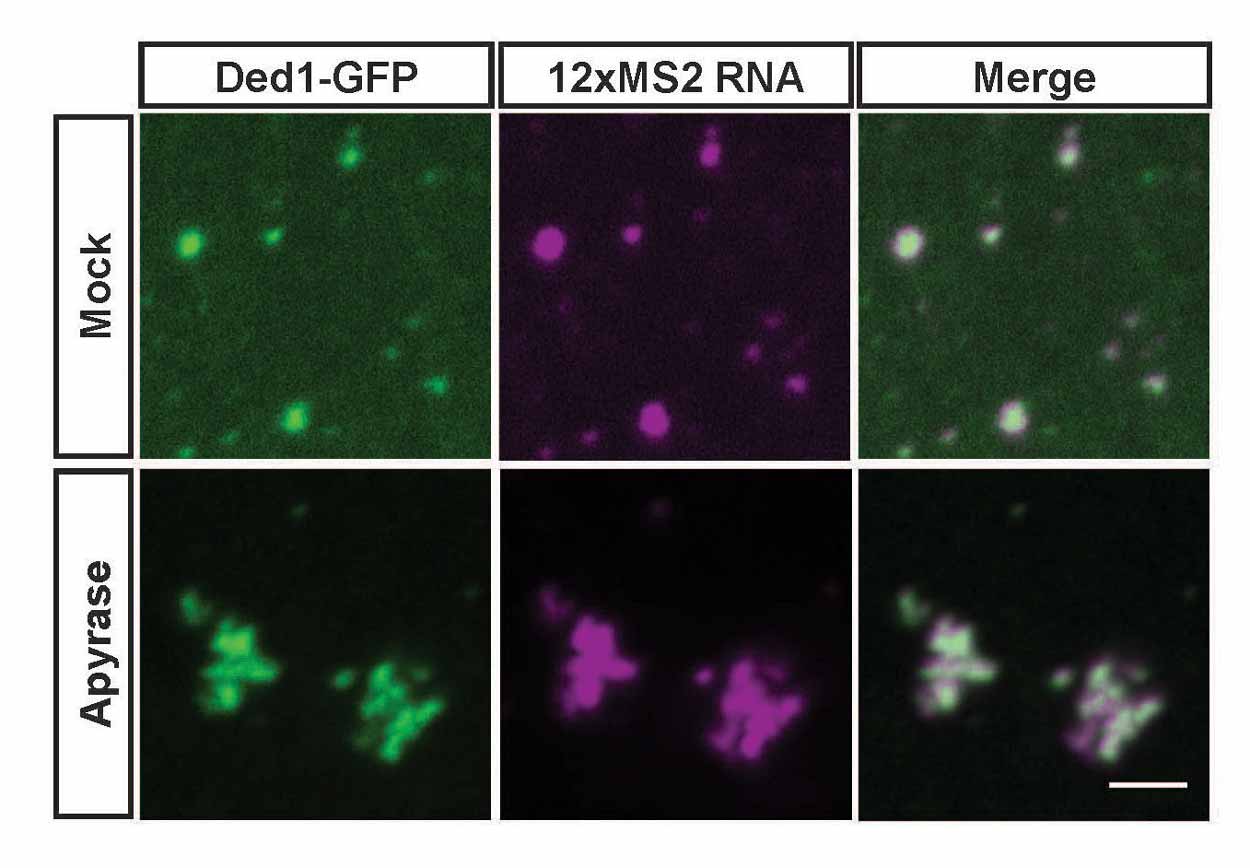Biologists Create Live System Mimicking Stress Response in Cells
Protective stress granules implicated in neurodegenerative diseases and cancer
August 13, 2020
By Mario Aguilera

A new system developed by UC San Diego researchers mimics stress conditions, here imaged as stress granules forming fibers similar to those seen in neurodegenerative conditions.
Humans cope with stress in a variety of ways, from calming breathing exercises to taking a brisk walk around the block.
Our individual cells have their own methods of coping with stress. One common form of cell defense—against stresses such as chemical damage and abnormal temperatures—is known as the stress granule. Stress causes proteins and RNA molecules to separate out of solution into stress granules the same way that oil separates in salad dressing. Hiding these molecules in stress granules protects these sensitive cellular components until the threat subsides. Stress granules and their dynamics have been traced in a variety of diseases ranging from neurodegenerative disorders to cancer.
Scientists have been working to decipher the molecular mechanisms that control stress granule assembly and composition in the pursuit of new treatments for such diseases.
Now, researchers at the University of California San Diego working in yeast have developed the first system for building stress granules in a test tube in order to help unlock the complex network of processes that drive their formation.
The new system is detailed in a paper published online August 10 in the journal Molecular Cell.
“Our stress granule assembly system represents the first biochemical reconstitution of an RNA granule,” said UC San Diego Biological Sciences Professor James Wilhelm, who led the study along with first-author and former graduate student Kyle Begovich. “This system will allow access to aspects of stress granule biology that have been difficult to access using previous techniques.”
The new system is allowing researchers to investigate specific roles carried out by RNA in stress granule dynamics, and specifically molecules such as adenosine triphosphate (ATP). The system has already shown that networks of distinct transcripts are required to form stress granules.
The research was supported by the Howard Hughes Medical Institute Collaborative Innovation Awards program and a Howard Hughes Medical Institute Gilliam Fellowship to Begovich.
